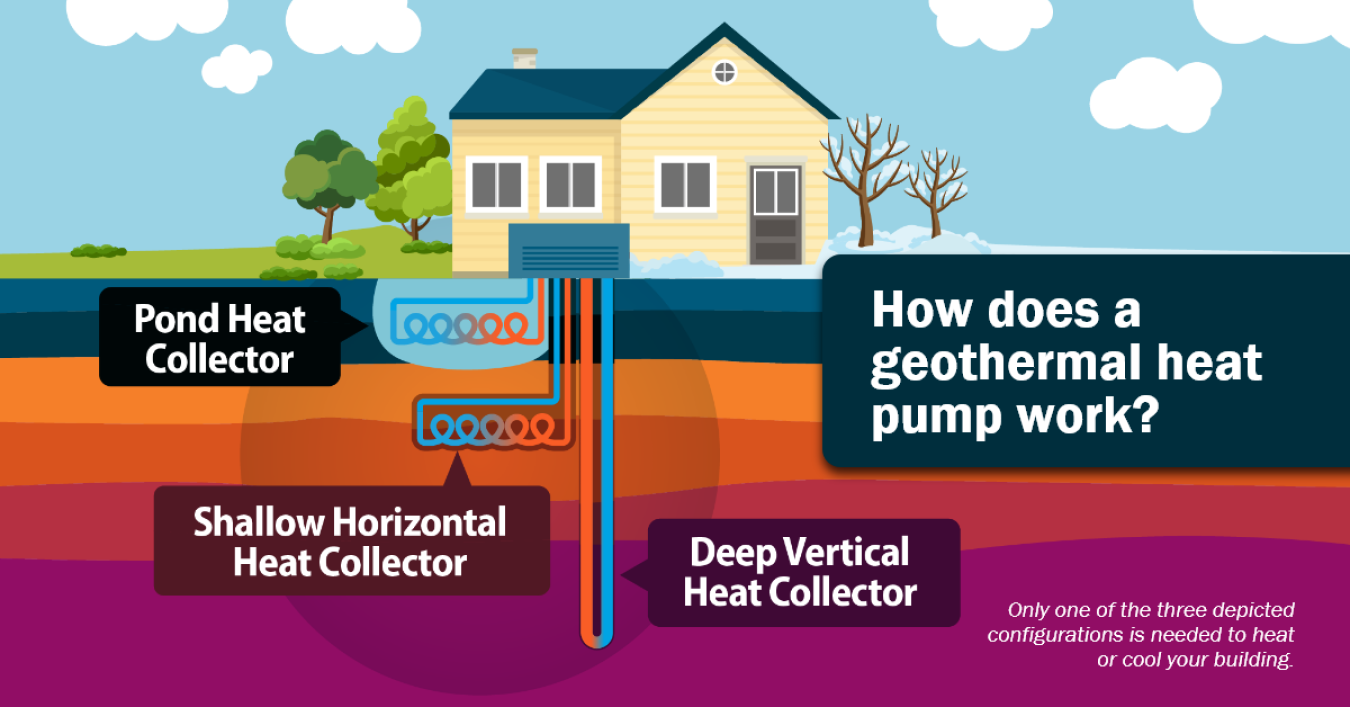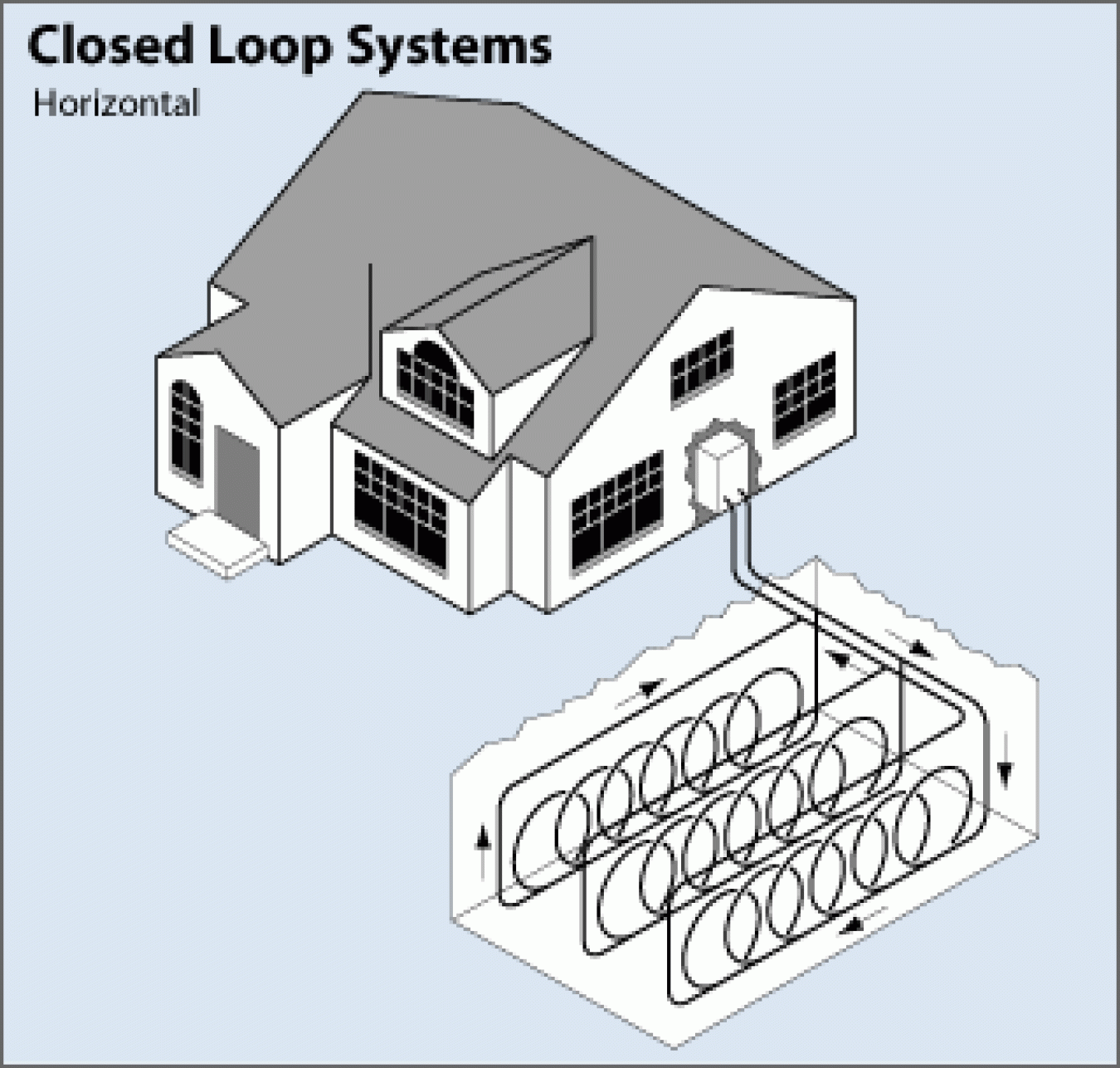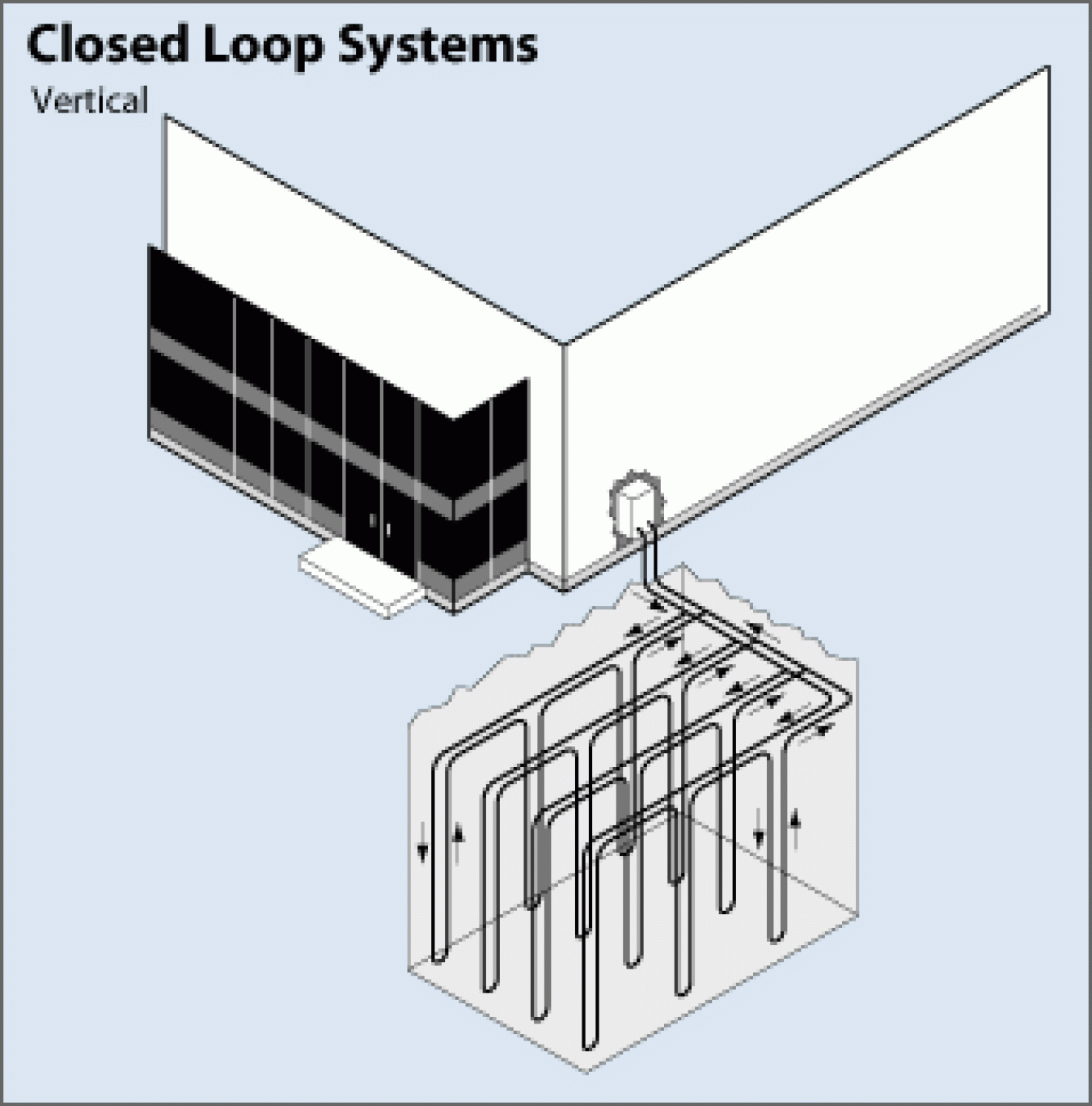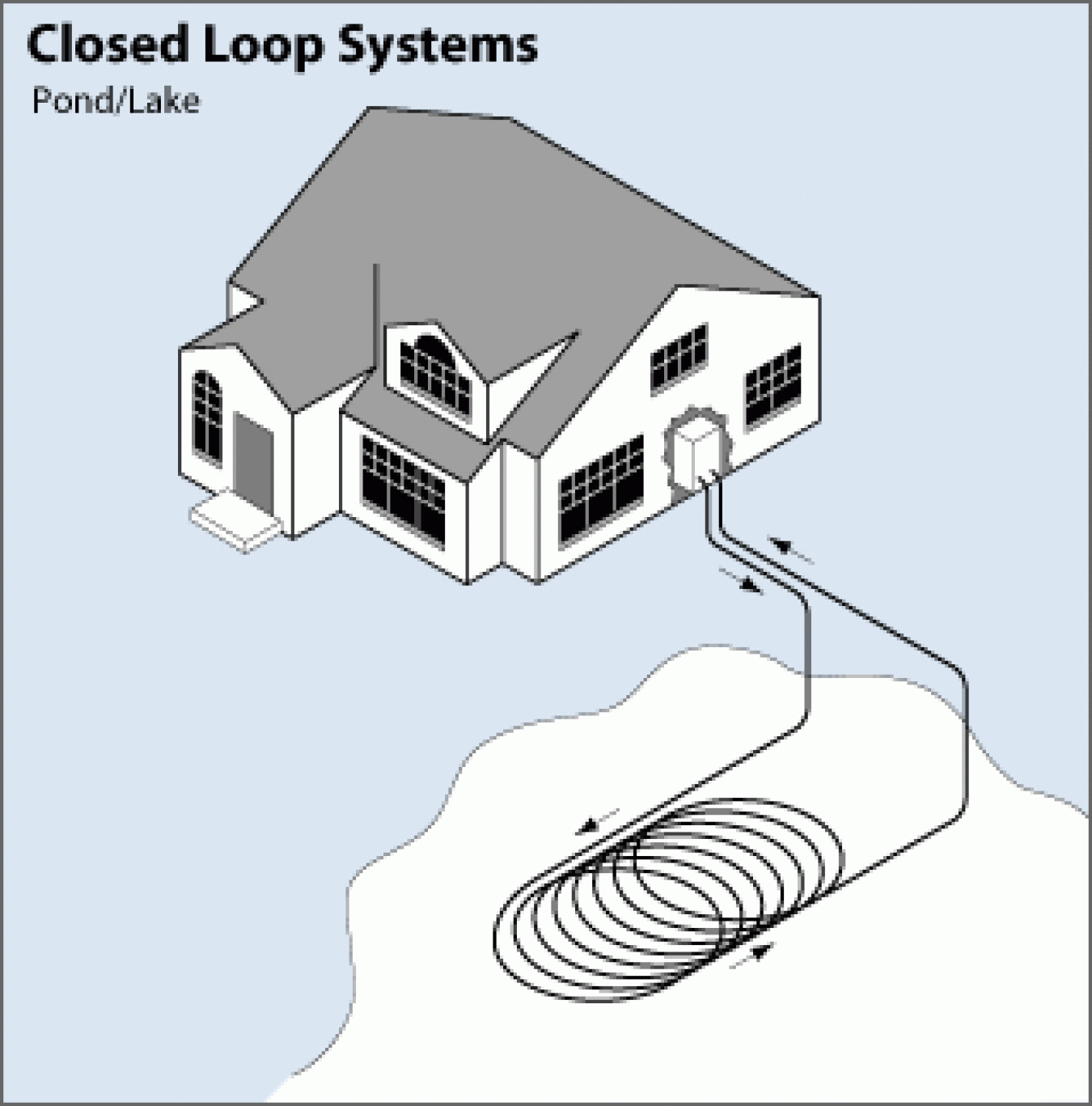Geothermal heat pumps (GHPs), take advantage of the constant temperature of the shallow earth (40°-70°F/4.5°-21°C) to efficiently exchange temperatures, heating homes in the winter and cooling homes in the summer.
Learn more about geothermal heat pumps from the Geothermal Technologies Office:
Stay on top of all things geothermal: Subscribe to the Geothermal Technologies Office’s email updates
Although many parts of the country experience seasonal temperature extremes—from scorching heat in the summer to sub-zero cold in the winter—a few feet below the earth's surface the ground remains at a relatively constant temperature year-round.
This ground temperature is warmer than the air above it during the winter and cooler than the air in the summer. The GHP takes advantage of the constant subsurface temperatures by exchanging heat with the earth through a ground heat exchanger.
The ground provides a type of thermal energy storage, which allows GHPs to act as a heat sink—absorbing excess heat during summer, when surface temperatures are relatively higher—and as a heat source during the winter, when surface temperatures are lower. This increases efficiency and reduces the energy used to heat and cool homes.
As with any heat pump, geothermal and water-source heat pumps are able to heat, cool, and, if so equipped, supply the house with hot water. Some models of geothermal systems are available with two-speed compressors and variable fans for more comfort and energy savings. Relative to air-source heat pumps, they are quieter, more efficient, last longer, need little maintenance, and do not rely on the temperature of the outside air, which is more variable than the ground temperature in most climates.
A dual-source heat pump combines an air-source heat pump with a geothermal heat pump (versus a dual-fuel heat pump, which combines natural gas heating in combination with an air-source heat pump). These appliances combine the best of both systems and can switch between air-source and ground-source depending on what mode is better for the load required.
Watch how geothermal heat pumps heat and cool buildings by concentrating the naturally existing heat contained within the earth -- a clean, reliable, and renewable source of energy.
Even though the installation price of a geothermal system can be several times that of an air-source system of the same heating and cooling capacity, the additional costs may be returned in energy savings in 5 to 10 years, depending on the cost of energy and available incentives in your area. System life is estimated at up to 24 years for the inside components and 50+ years for the ground loop.
A qualified installer or contractor can help ensure the highest efficiencies from a GHP system based on site characteristics and intended use, and can provide information on any regulations or permitting that might be required. For more information, visit the Geothermal Technologies Office website and the International Ground Source Heat Pump Association.
Types of Geothermal Heat Pump Systems
There are four basic types of GHP ground loop systems. Three of these—horizontal, vertical, and pond/lake—are closed-loop systems. The fourth type of system is the open-loop option. Several factors such as climate, soil conditions, available land, and local installation costs determine which is best for the site. All of these approaches can be used for residential and commercial building applications. An accredited contractor or installer can determine the best type of system to install in a particular location by testing the site’s soil and ground makeup and discussing the intended use.

Closed-Loop Systems
Most closed-loop geothermal heat pumps circulate water or a blended water-glycol solution through a closed loop—usually made of a high-density plastic-type tubing—that is buried in the ground or submerged in water. A heat exchanger transfers heat between the refrigerant in the heat pump and the antifreeze solution in the closed loop.
One type of closed-loop system, called direct exchange, does not use a heat exchanger and instead pumps the refrigerant through copper tubing that is buried in the ground in a horizontal or vertical configuration.

Horizontal
Commonly uses two pipes, one buried at six feet, and the other at four feet, or two pipes placed side-by-side at five feet in the ground in a two-foot wide trench, requiring trenches at least four feet deep. This type of installation is generally most cost-effective for residential installations, particularly for new construction where sufficient land is available.

Vertical
Holes (approximately four inches in diameter) are drilled about 20 feet apart and 100 to 400 feet deep, allowing for two pipes to be inserted and connected at the bottom with a U-bend to form a loop. Large commercial buildings and schools often use vertical systems when the land area required for horizontal loops would be prohibitive.

Pond/Lake
If a site has a body of water that meets minimum volume, depth, and quality requirements, geothermal heat pumps exchange heat with water instead of the ground. A supply line pipe is run underground from the building to the water and coiled into circles, which in cold climates are placed at least eight feet under the surface to prevent freezing.
Hybrid Systems
These systems use several different geothermal resources or a combination of a geothermal resource with outdoor air (i.e., a cooling tower). Hybrid approaches are particularly effective where cooling needs are significantly larger than heating needs.
In addition to GHPs, DOE's Office of Energy Efficiency and Renewable Energy also researches air-source heat pumps through the Building Technologies Office.
Subscribe to receive updates and energy-saving tips for consumers and homeowners.

